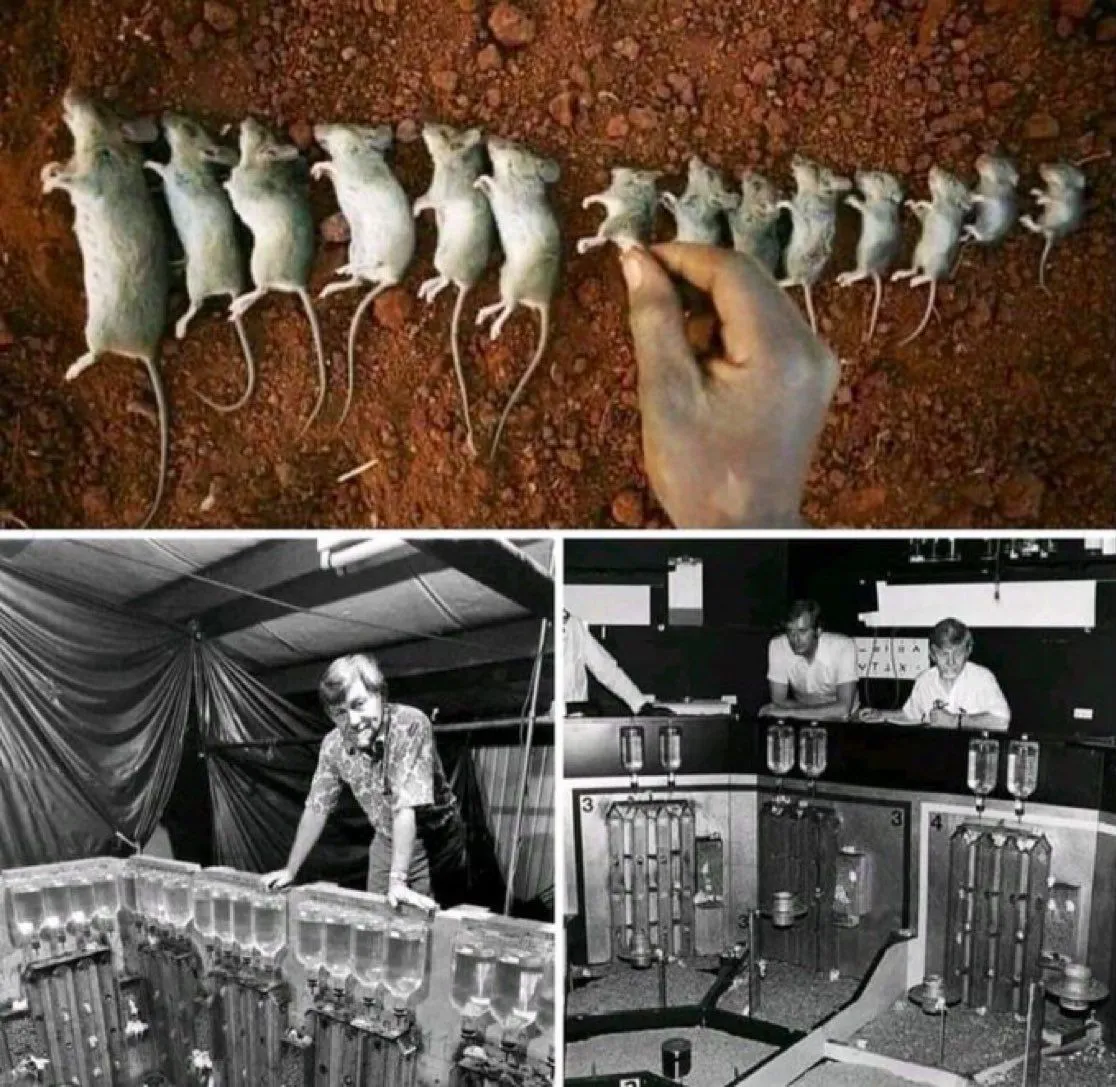Nutrition et santé
L’experience Universe 25 sur le bonheur et son impact chez les souris
Le post
Voir sur
The “Universe 25” experiment, conducted by American scientist John Calhoun, is one of the most alarming studies in the history of science. It aimed to explain human societies through the behavior of a mouse colony.
Calhoun created an “ideal world” for hundreds of mice, known as the “Paradise of Mice,” where they had abundant food, water, and ample living space. Initially, he introduced four pairs of mice, which quickly reproduced, causing the population to grow rapidly.
However, after 315 days, their reproduction rate significantly declined. When the population reached 600, a hierarchy emerged, and the so-called “wretches” appeared. Larger rodents began attacking others, leading to psychological collapse in many males. Consequently, females became aggressive towards their young and did not protect themselves.
Over time, the females exhibited increasing aggression, isolation, and a lack of reproductive drive. This led to a low birth rate and higher mortality among younger rodents. A new class of male rodents, termed “beautiful mice,” emerged. They refused to mate or fight for territory, focusing only on food and sleep. Eventually, “beautiful males” and “isolated females” dominated the population.
Calhoun described the death phase in two stages: the “first death,” marked by a loss of purpose beyond mere existence, and the “second death.” Juvenile mortality reached 100%, and reproduction ceased entirely. Despite abundant food, cannibalism and homosexuality increased among the mice.
Two years into the experiment, the last baby mouse was born, and by 1973, the last mouse in Universe 25 had died. Calhoun repeated the experiment 25 times, with the same outcome each time.
Calhoun’s work has been used to model social collapse and serves as a significant reference in urban sociology studies.

Le débunk
This experiment was indeed conducted by John B. Calhoun on mice.
His scientific article was published in 1973: https://www.ncbi.nlm.nih.gov/pmc/articles/PMC1644264/pdf/procrsmed00338-0007.pdf
Calhoun was firmly convinced that overpopulation would lead humanity to a similar fate (in a, markedly? anthropomorphic manner) and advocated for the colonisation of other planets within the solar system as a means to prevent societal collapse (a theme that was particularly prominent in the 1960s in response to the rapid increase in global population).
However, subsequent research has demonstrated that improvements in living conditions tend to correlate with decreases in both mortality and... birth rates (see the work of Hans Rosling: https://www.afis.org/Factfulness).
Projections now suggest that the global population will stabilise at approximately 11 billion by the year 2100.
Furthermore, a human-based "overpopulation" experiment was conducted by psychologist Jonathan Freedman in 1975.
His findings diverged significantly from those of Calhoun, arriving at conclusions that were essentially the opposite: https://nihrecord.nih.gov/sites/recordNIH/files/pdf/2008/NIH-Record-2008-07-25.pdf
In addition, the author of the referenced publication appears to have incorporated several personal interpretations into their analysis, including:
the assertion that the original experiment was replicated identically 25 times
parallels drawn between the experiment and contemporary society
claims regarding the feminisation of men and insufficient maternal behaviour in women
the development of homosexuality within the experimental population (whereas Calhoun referred more to pansexuality, or sexual behaviour not exclusively oriented toward reproduction: https://www.cabinetmagazine.org/issues/42/wiles.php)
Conclusion: Humans are not mice, and numerous new scientific studies have been conducted since the 1960s and 1970s.
Further reading on the societal impact of Calhoun’s work: http://eprints.lse.ac.uk/22514/1/2308Ramadams.pdf
En français pour ref :
Cette expérience a bien été réalisée par John B. Calhoun sur des souris.
Son article scientifique a été publié en 1973 : https://www.ncbi.nlm.nih.gov/pmc/articles/PMC1644264/pdf/procrsmed00338-0007.pdf
Calhoun était sûr que la surpopulation mènerait l'homme au même destin (de façon très/trop ?anthropomorphique) et recommandait de chercher à peupler les planètes du système solaire pour éviter un effondrement de notre société (thème à la mode dans les années 60 avec la hausse de la population).
Néanmoins, il a depuis été démontré que l'amélioration des conditions de vie entraîne une diminution du taux de mortalité... et de natalité (cf travaux de Hans Rosling : https://www.afis.org/Factfulness).
La population mondiale devrait ainsi se stabiliser autour de 11 milliards d'individus en 2100
Aussi, une expérience de "surpopulation" sur les humains a été testée par le psychologue Jonathan Freedman en 1975... et il est arrivé à des conclusions diamètralement opposées à celles de Calhoun : https://nihrecord.nih.gov/sites/recordNIH/files/pdf/2008/NIH-Record-2008-07-25.pdf
De plus, l'auteur de cette publication a ajouté quelques idées personnelles dans ce texte comme :
le fait que cette expérience ait été reproduite à l'identique 25 fois
les liens entre cette expérience et la société actuelle
les hommes féminisés et les femmes pas assez maternantes
le développement de l'homosexualité au sein de l'expérience (Calhoun parle plutôt de pansexualité / de sexualité avec un objectif qui n'est pas uniquement la reproduction : https://www.cabinetmagazine.org/issues/42/wiles.php)
Conclusion : Les humains ne sont pas des souris (et de nouvelles expérimentations scientifiques ont été faites depuis les années 60-70)...
Etude de l'impact de ces travaux sur nos sociétés : http://eprints.lse.ac.uk/22514/1/2308Ramadams.pdf
Vous avez une question, une remarque ou une suggestion ? Contactez-nous en en indiquant le titre du débunk. Nous vous répondrons au plus vite !
Contactez-nous
